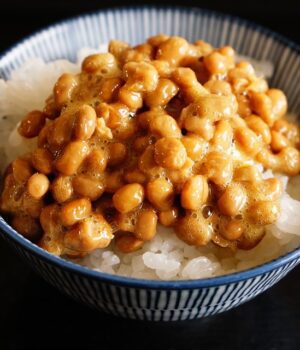"Slimy, fermented and odorous", that would be how I would describe the natto in three words If you have TikTok or any other similar social network, surely you have already seen some an influencer opening containers and tasting a somewhat viscous food, similar to a pinto bean (somewhat wrinkled) and with not very good looking. This food is called natto, is a trend thanks to its appearance on social networks and It can be bought in Asian supermarkets in Spain.
It was introduced to Japan from China time immemorial ago and now it comes to Spain
This food, unappetizing and smelling of ammonia, has become fashionable in Spain for its health benefits. A packet of natto a day keeps you from dying, she tells herself. Was introduced to Japan from China in time immemorial yes one of the essentials of the japanese diet. But, what is true and what is legend in everything that has to do with this "superfood"?
“In the historical record in Japan, it is recorded that natto was introduced in the eighth century and popularized among aristocrats and warriors during the Kamakura period, Together with tofu, in the kitchen buddhist vegetarian”. This is how the director of Donzoko tells it, who also talks about his nutritional properties. Donzoko affirms that this food: "It is rich in protein, vitamins B6, E and B2, potassium, magnesium, calcium and iron”. He also mentions a number of health benefits of this fermented: "Stimulates cell renewal, delays skin aging and improves blood flow.
Viscous, fermented and odorous, the natto
We know where it comes from, but what exactly is this food that looks like edible mucus What is 'boosting' it on social networks? Natto, as we mentioned before, is a traditional Japanese food originating in China, made from fermented soybeans. soy beans they are cooked, is added a spoonful of sugar and then exposed to the action of the bacteria 'bacilli subtiles' for 24 hours at a temperature of 40 degrees. When fermenting, it releases a kind slimy slime very characteristic with a rather strong smell, similar to ammonia, and the consistency of a mucus.
Or you love it, or hate it







